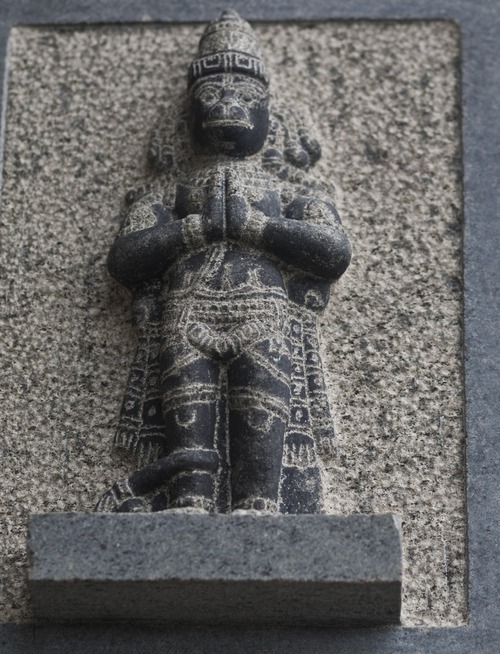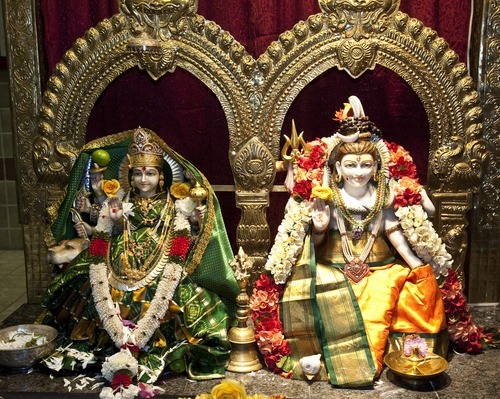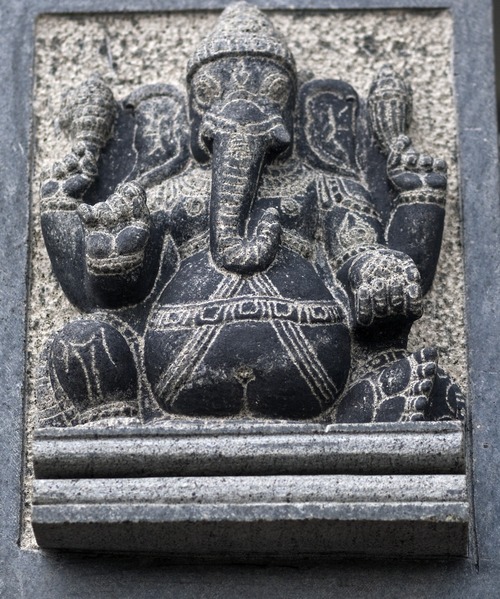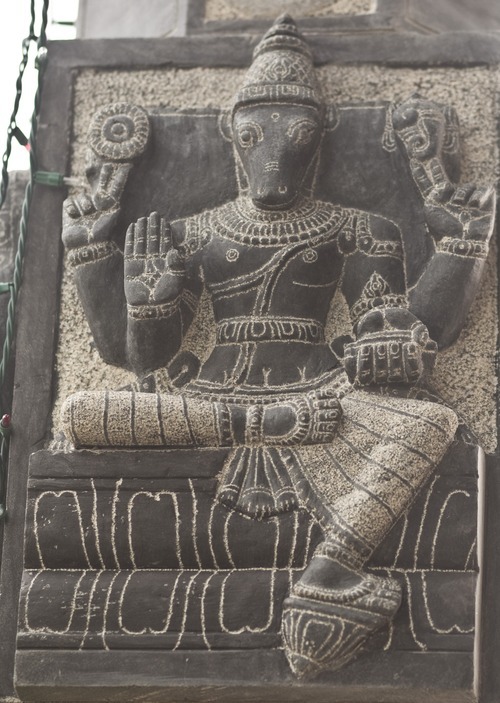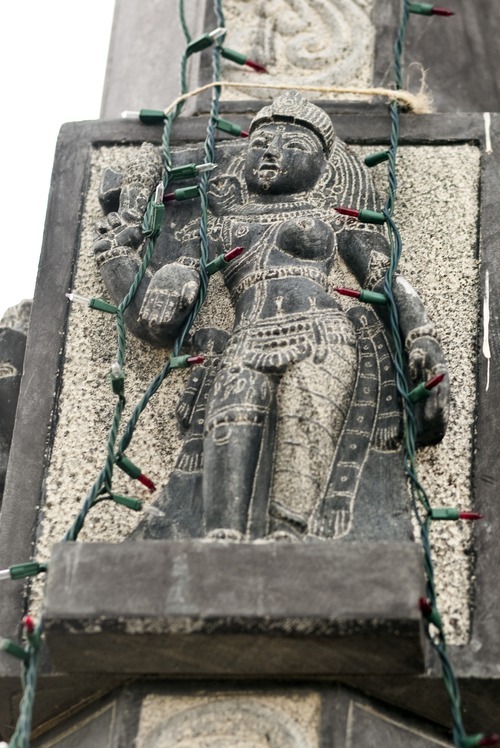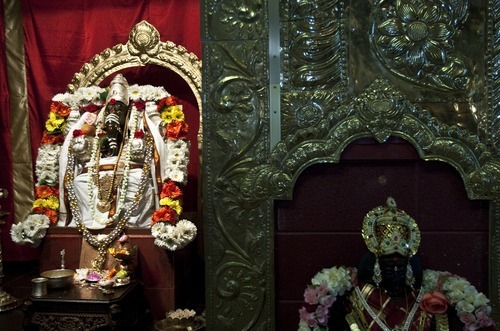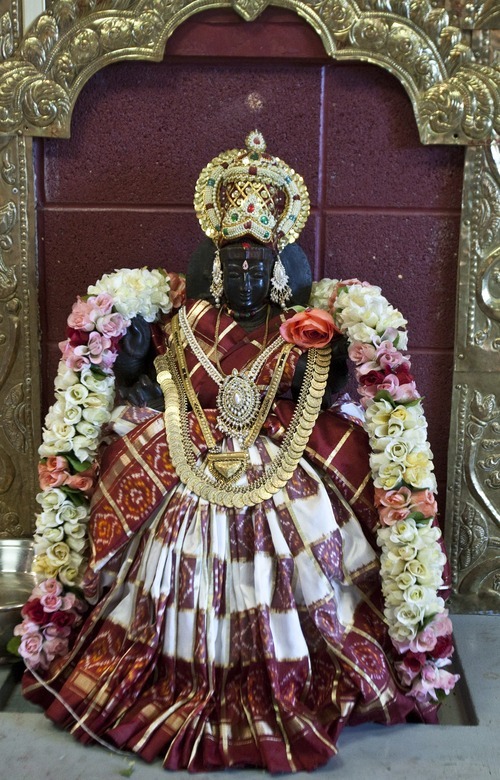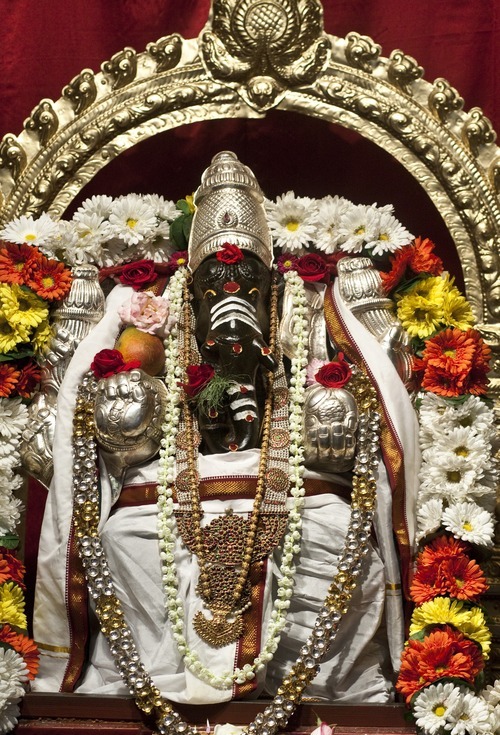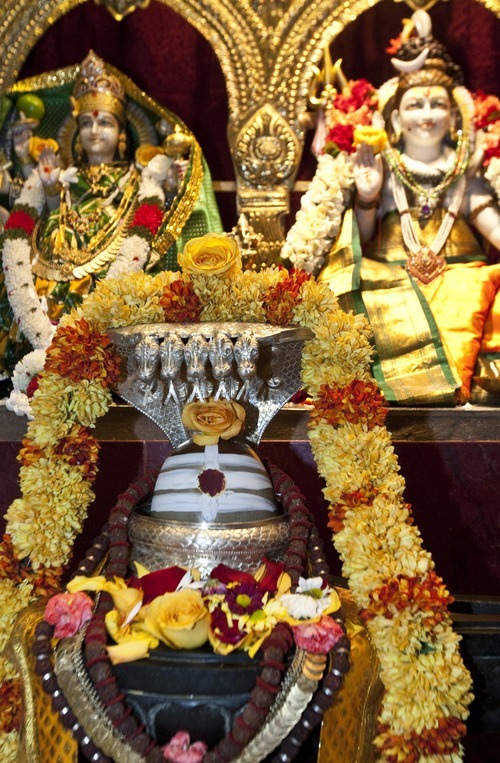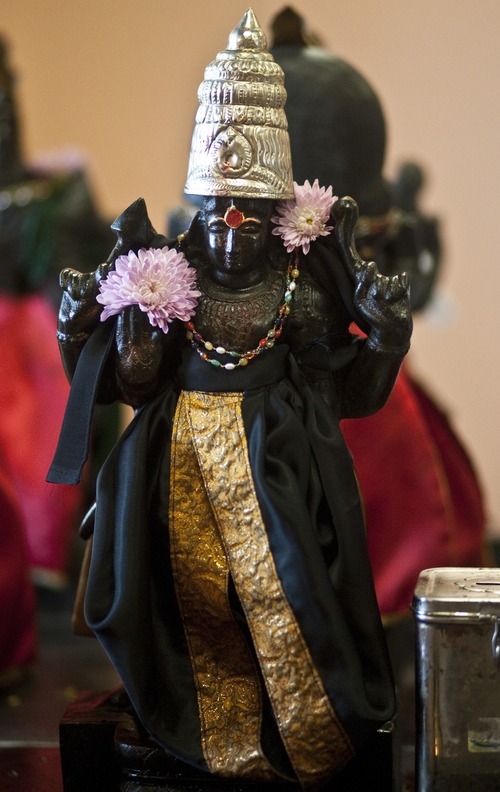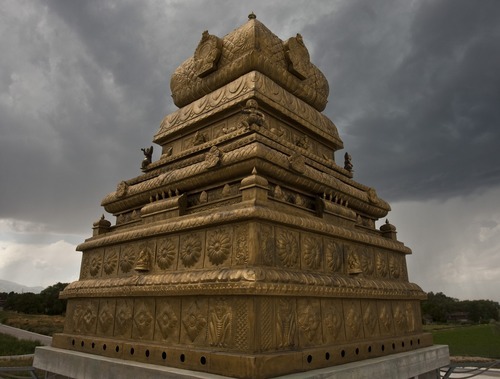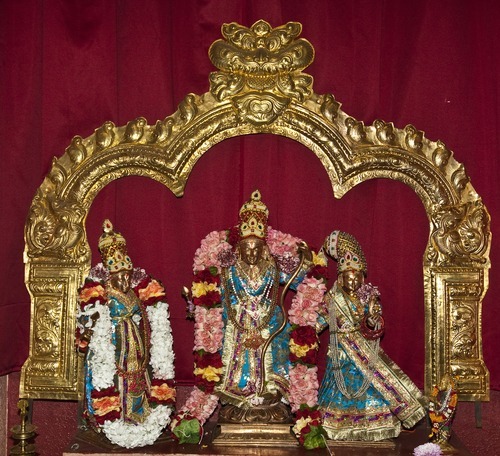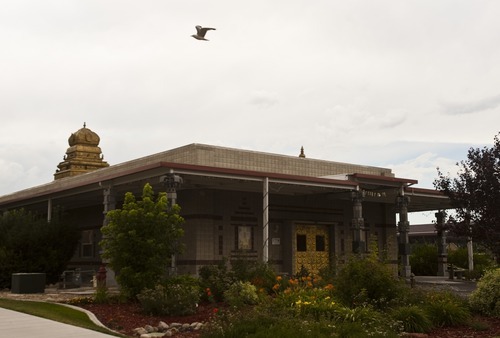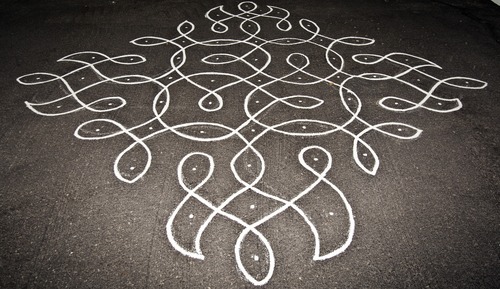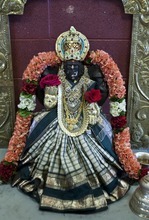This is an archived article that was published on sltrib.com in 2011, and information in the article may be outdated. It is provided only for personal research purposes and may not be reprinted.
South Jordan • From a distance, it's not easy to see the carved images of Hindu deities on the pillars, the intricacies of the brass tower or many of the other artistic features of Sri Ganesha Hindu Temple of Utah.
But years from now, if the dreams of temple leaders come true, the building itself will be a hard-to-miss, massive piece of art.
Leaders envision a large, multitiered, white tower rising like a wedding cake into the sky. They picture 23 carved pillars highlighting deities around the structure. They hope to see their ambitions fulfilled as the number of worshippers and the temple's coffers grow.
"There are certain traditions people are used to thinking of in temples," said Indra Neelameggham, one of the temple's founders. "Here, in a foreign country, it's very important to create the ambience by showing pictures, icons, even architectural features to help them have that religious experience."
Though the temple, consecrated in 2003, still has a way to go before the founders' vision is realized, it is already surrounded and filled with art meant to help worshippers attain that experience.
For example, the21-foot-high brass tower, called a vimana, sits on the roof and is covered with auspicious lotus-flower designs, symbolizing spiritual calmness, and deities that guard eight directions. Though it's based on traditional designs that date back at least 1,000 years, its creation was anything but conventional.
Typically, temple towers have been built out of stone or brick, with designs carved into the material and then covered in metal. The South Jordan Hindu temple, however, turned the process inside out to ensure its vimana could withstand Utah's weather extremes.
Instead, artisans in India, known as sthapathis, constructed the tower as a shell out of nearly 200 brass parts, which were then disassembled, shipped to South Jordan and put back together like puzzle pieces to fit over a pyramid-shaped concrete tower already on the roof.
"It was so perfectly matched when we put it together," Neelameggham said.
The temple is also buying carved pillars as it can afford them. So far, it has six, which mostly appear out front. Carvings of various deities sit on the sides of each. The deity Shiva, who teaches and gives knowledge, appears with the demon of ignorance at his feet. On another pillar, Saraswati, the deity of learning, music and art, holds a book in one of her four arms.
Statues of deities fill the inside of the temple as well.Typical Hindu temples in India tend to focus mostly on one deity each. But because there are so few Hindu temples in Utah, the South Jordan edifice features a number of deities to meet the needs of a diverse group of worshippers.
"Each of the deities represents something," Neelameggham said.
Inside, a large dancing Shiva, hair billowing out on each side as if in midspin, greets visitors. He stands on a figure representing ego — keeping it in check — and his dance, within a shining circle, represents creation. It's a detailed work consisting of a single bronze casting.
"Everything is about symbols," said Vidya Anand, office manager at the temple. "You can see symbols all over."
But the focal point is the sanctum, a shrine housing a statue of the Lord Ganesha, each of his six hands holding a different symbol or engaged in a different gesture.One hand holds an ankush, a goad-type tool to help him tame life. Another grasps a noose to remove life. Yet another bears a dish of food showing that everything sweet in life is given by Ganesha.
With the head of an elephant and the body of a man, the deity is believed to clear obstacles from one's path.
Much of the sanctum is covered in decorated bronze sheeting, emitting a golden gleam. As the temple gets more money, it plans to cover more of the inside with the shining sheets.
"Our most precious place is the temple," Neelameggham said, "and we want the best decorations to go in the temple."
lschencker@sltrib.com twitter: @lschencker —
The art of faith — a yearlong series
P The Salt Lake Tribune is featuring a monthly series this year about religious art.
Today • Hindu art.
Previous stories in the series • sltrib.com


